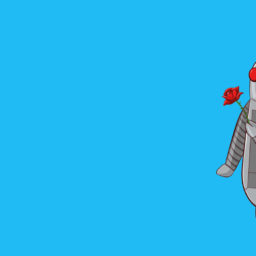Time for a quick lesson in free publicity. The increase of easy access to information and entertainment, combined with the democratisation of creation thereof, have led to the need for curation.
As an artist, you want to get your music noticed by curators, so it gets spread around further. But how do you get them to give a damn?
Curators follow curators
How do you think curators get their content? They follow other curators. It can be the DJ getting selected tracks from a trusted label rep, or a blogger learning about new releases through a mailinglist.
The easiest way to get noticed by top curators, is making sure you get noticed by smaller curators.
You have to be consistent about it. People have to see your name a few times before recognising you. Only then will they start giving a damn. How you do this depends on the category of music curation.
It will take time. It can be a year if you work hard at it – or even longer. If you don’t work hard at it, it will never happen, unless you hire someone that already has the network.
The categories of music curation
The actual dynamics differ from category to category, but the basic jest is that you start small and try to move up the curation food chain. Follow the curators who you want to be noticed by closely, so that you can figure out where they get their music from.
Some domains to think of:
- Radio airplay: start with local and genre-specific, and slowly work your way up. This is probably the slowest process of all, since nationwide airtime is highly valued.
- Genre-specific publications: there are dozens of decent publications and blogs per genre, perhaps a bit less for younger genres.
- Location-specific publications: can even be location/genre-specific, like a local rock magazine.
- Channel curators: think YouTube, Soundcloud.
- Theme publications: these are similar to genre publications, but generally broader. Might also report on fashion, or a certain set of genres and sounds that can be loosely grouped together.
- Live DJs.
- Playlist curators.
There are plenty of other areas to explore, but if you’ve never really thought about this topic, then these are a good place to start.
The music business is a network business
You have to build your connections. Start with the more approachable curators. You can find them at events or in online communities like Facebook groups or Reddit. Your music might be really, really good, but when you hit the inbox of a curator, chances are it’s going to look like just another promo. They might not even listen to it.
Be creative about it, like these guys who wanted to get noticed by a prominent DJ in their genre:
dam hes slick pic.twitter.com/WeKqc1gGYg
— watthefrick.com (@GetterOfficial) September 17, 2016
If you’re intent on being able to arrange your own publicity, then check out the books Made to Stick and Contagious. They’re great books for learning how to construct strong stories to communicate ideas.
And a little hack: get a free Hubspot account, so you can see when people open your emails and whether they’ve clicked your links. It will help you to determine where you’re succeeding or failing, and adjust accordingly.














